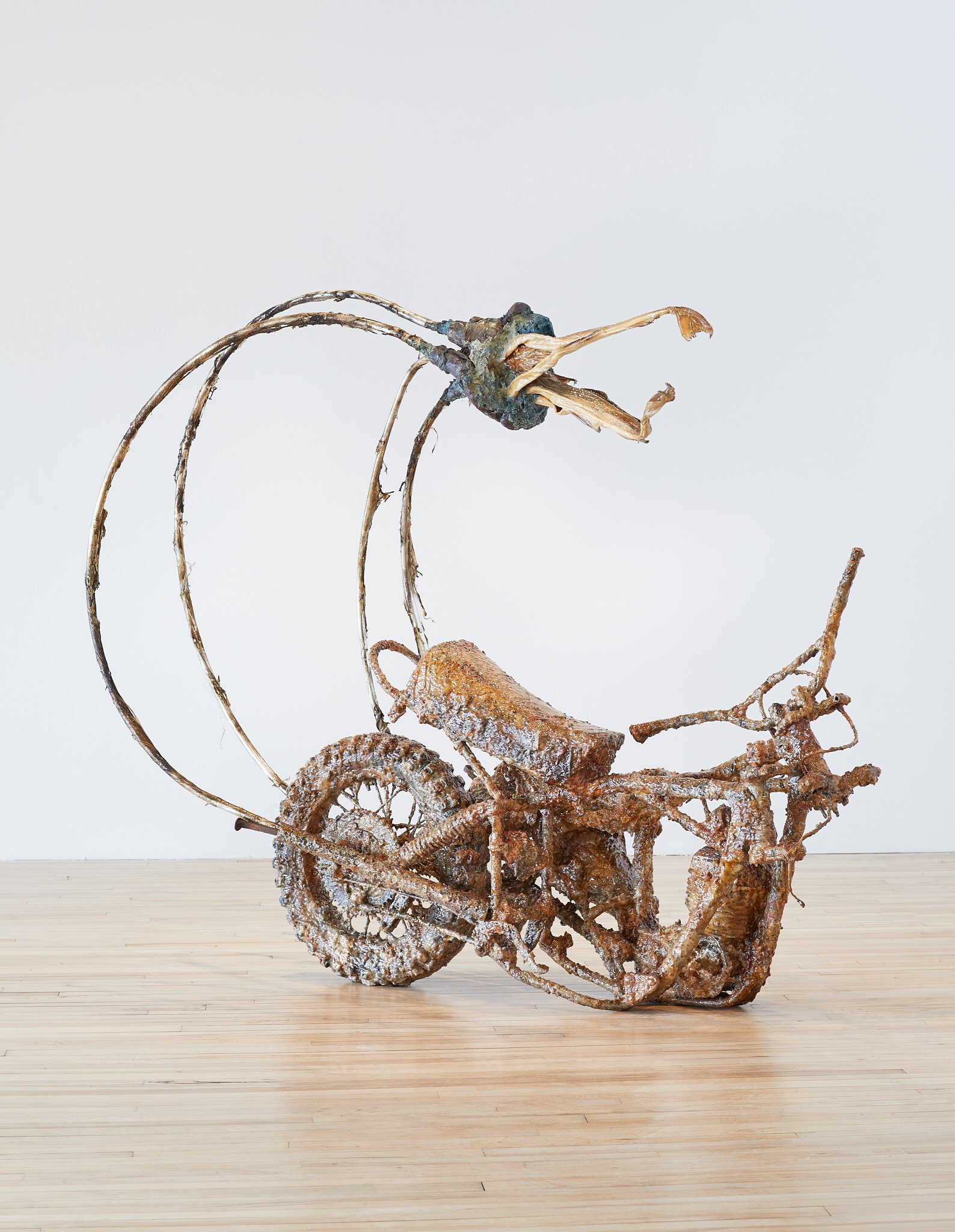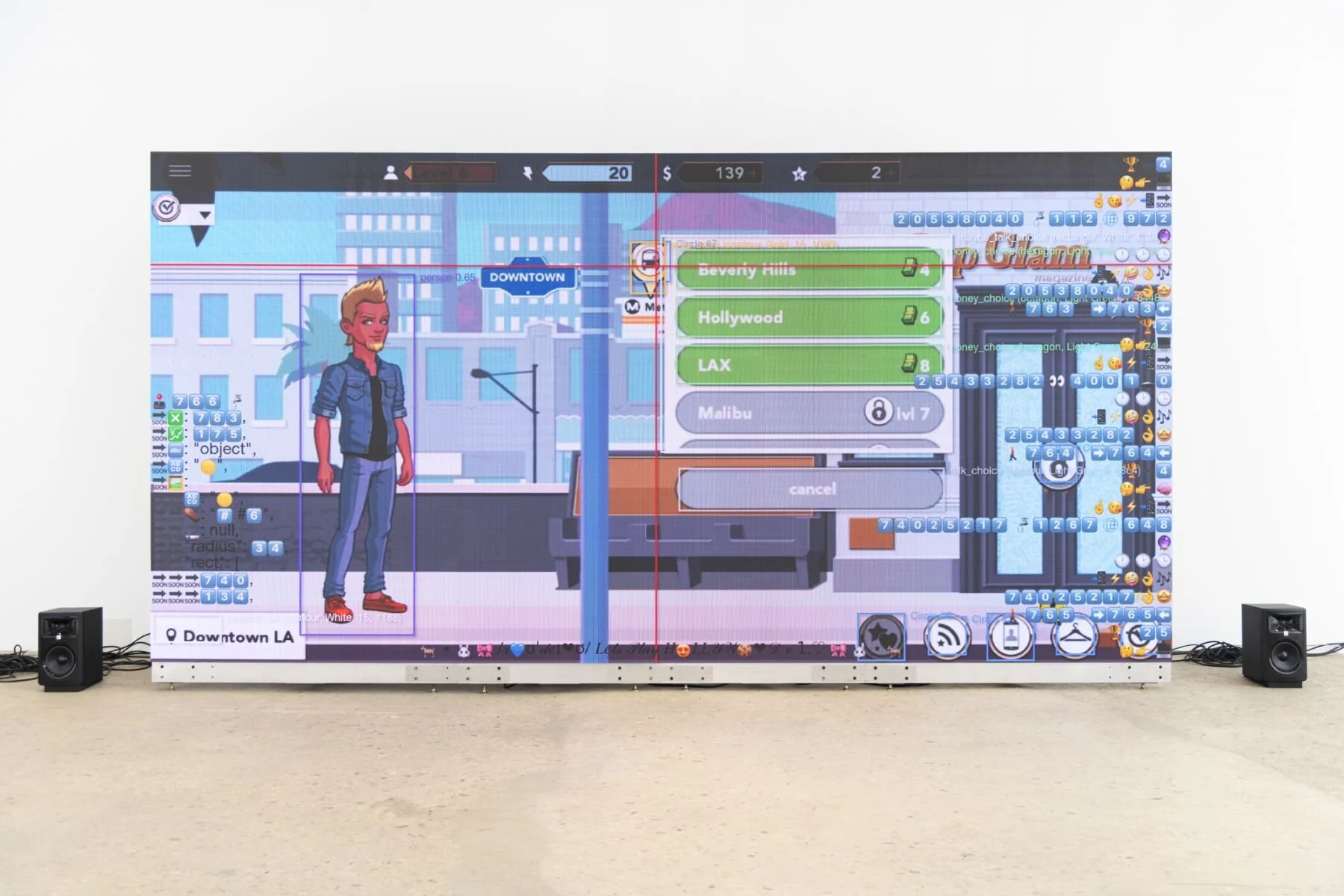Highly Significant Fragments
Fever Lure at Selena’s Mountain
Christina Yuna Ko, Shana Sadeghi-Ray, and Emma Stern: Fever Lure
Selena’s Mountain
63 Woodward Ave, #6321, Ridgewood, NY 11385
January 19 to February 16, 2019
Installation view of Fever Lure. Image courtesy of the gallery.
Everything in the art world is built on top of something else, an ancient city where all the buildings are supported by ruins lying upon further ruins; ruins all the way down. There is no solid “ground” to speak of, just another layer of artifacts underfoot. Artists arrange fragments of these ruins to create art that is novel, but not original; the resulting artworks cannot be traced to a point of absolute genesis and are always in the process of being assembled or disintegrating. This manner of thinking—that art is a rearrangement of pre-existing materials rather than a heroic act of creation ex nihilo—can be found throughout history, particularly in the baroque art and literature of early modern Europe and its colonies. Walter Benjamin, on baroque literature, wrote in his Origin of German Tragic Drama: “That which lies here in ruins, the highly significant fragment, the remnant, is, in fact, the finest material in baroque creation. For it is common practice in the literature of the baroque to pile up fragments ceaselessly, without any strict idea of a goal, and, in the unremitting expectation of a miracle, to take the repetition of stereotypes for a process of intensification. The baroque writers must have regarded the work of art as such a miracle (178).”
The three-woman show Fever Lure at the recently-opened Selena’s Mountain could be such a miracle, too. Each artist’s work is, like Benjamin’s piles of fragments, derivative in one way or another. This isn’t pejorative: The collective cultural nausea prompted by the term “derivative” can be traced back to the modernist obsession with impossible formal originality that continues to haunt the arts. It manifests itself in the form of copyright laws that limit citation and appropriation, and a popular distaste for—and mistrust of—works that overtly borrow from other works. Even if it’s acknowledged that art is an arrangement of fragments, many prefer not to see the gaps and seams between them nor be able to identify from where each element was pulled.
Christina Yuna Ko, Burnt Waves Cool Grass, 2017, Digital print, 11 x 17 inches. Image courtesy of the gallery.
Fever Lure’s artists aren’t so scrupulous. Christina Yuna Ko’s paintings are pastiches of imagery from Japanese anime and video games. Some of her sources are easily indefinable: 90’s franchises like Sailor Moon, Inuyasha, and Pokémon. To theorist Hiroki Azuma, anime from the mid-90’s onward has been a game of rearrangement that follows the logic of the database rather than any grand narrative trajectory. Azuma claims in his book Otaku that, following the conclusion of the anime series Neon Genesis Evangelion in 1994, fans and producers, seemingly simultaneously, realized that the goal of such media was not to communicate narrative but rather to foster affect—moé[i]—through the presentation of appealing characters. After that point, character design became a game in which producers arranged what Azuma calls “moé-elements” from a collective database. Not a literal database—you can’t open it in Excel—but an imaginary collection of traits and motifs to which fans had affective responses. Individual characters are designed to appeal to a sense of moé and not for any position in the history of their fictional worlds. According to Azuma: “As one can immediately see in specialty stores in the Akihabara or Shinjuku parts of Tokyo, the moe-elements are proliferating within otaku culture. The ‘characters’ circulating in these stores are not unique designs created by the individual talent of the author but an output generated from preregistered elements and combined according to the marketing program of each work (42).” Fragments coalesce into characters, which are themselves used as fragments to build other works, which can be further fragmented and appropriated by artists like Yuna Ko. Her paintings foster a sense of moé melancholia, ennui in happy pastel. Pretty Pink Arguments even says, right on the canvas: “Leave me alone.”
Christina Yuna Ko, Pretty Pink Arguments, 2017, Acrylic on canvas, 27 x 34 inches. Image courtesy of the gallery.
Emma Stern uses a similarly vibrant rainbow palette in her paintings. She paints figures, but not humans; her subjects, based on 3D computer renderings, are humanoid but artificial. In that sense, her paintings are completely realistic, but this hyperrealism is not grounded in the world itself but built upon its simulacra. Her paintings of images, themselves based on further images, are an abyss of references can be endlessly explored without ever reaching the world itself. Perhaps her paintings are the sole mechanism with which these figures can materialize in our world, as Stern shifts their existence from bits and bytes to oil and pigment. One would expect this shift to occur in the opposite direction, as with the photography and sharing of digitized paintings, but Stern’s paintings push against this current. While singular physical objects are given endless virtual duplicates, Stern takes these multivalent digital objects and condenses them into individual paintings. Each one becomes a physical incarnation of a digital entity, its infinite malleability crystalized into a definitive form. Of every possible pose, perspective, and palette—or any from an endless number of variables–each painting presents one version while hinting at the further possibilities and iterations that lie in the cyberspace outside the frame. Technical execution aside, the artist’s task becomes the selection of the one instance that will represent the artwork’s cloud of possibilities, choosing a special fragment from an endless heap.
Emma Stern, The Chick, 2017, Oil on canvas, 46 x 58 inches. Image courtesy of the gallery.
Shana Sadeghi-Ray’s work on view revolves around basketball, specifically the accumulation of NBA and team-branded objects, some ready-made and some invented. It’s up to the viewer to determine if one artifact or another is “genuine” or not, and what the criteria for genuineness are at all. Perhaps her homemade NBA vases are more genuine than mass-produced souvenirs because their creation represents, or at least portrays, an act of fan devotion, regardless of whether or not they are actually licensed by the appropriate corporate entity. Seen from another angle, the creation of such an object has a pragmatic function: If a collector of NBA ephemera can’t find a specific item, a homemade version can take its place. Sadeghi-Ray takes on the role of artist-as-collector, a part as old as the baroque Wunderkammer fad, where collectors would arrange and display their strange and unique curiosities. When placed in a Wunderkammer environment, the question of each object’s genuineness or fakeness becomes less important than the relations between them in their specific configuration.
Installation view of Fever Lure. Image courtesy of the gallery.
Fever Lure, as a show, can be viewed the same way: a collection of fragments that, when arranged a certain way in a particular space, develops a network of connections that may become more compelling than any single one viewed in isolation. Each individual piece, itself formed from bits of images and media, is a microcosm of this, as are the media fragments that constitute it. From this viewpoint, the originality or banality of one fragment or another becomes a technicality. What does it matter if the artist doesn’t “own” a particular image or character if, when placed in a new context, it contributes to the success of the works that build upon it? One doesn’t “own” the collection of atoms constituting the human body, after all: each of us just borrows them from the universe for a little while.
Works Cited
Azuma, Hiroki. Otaku: Japan’s Database Animals. English ed., University of Minnesota Press, 2009.
Benjamin, Walter, and John Osborne. The Origin of German Tragic Drama. Verso, 2009.
Galbraith, Patrick W. The Moé Manifesto: An Insider’s Look at the Worlds of Manga, Anime, and Gaming. Tuttle Pub, 2014.
Cover image: Emma Stern, Kimmy, 2018, Oil on canvas, 26 x 22 inches. Image courtesy of the gallery.
[i] Moé is an infamously untranslatable word; Azuma assumes the reader’s familiarity and doesn’t precisely define his vision of it in his book Otaku: Japan’s Database Animals. Patrick Galbraith defines it as “an affectionate response to fictional characters (5)” in his book The Moé Manifesto, but the term’s exact definition is unclear in Japanese, much less in English.















